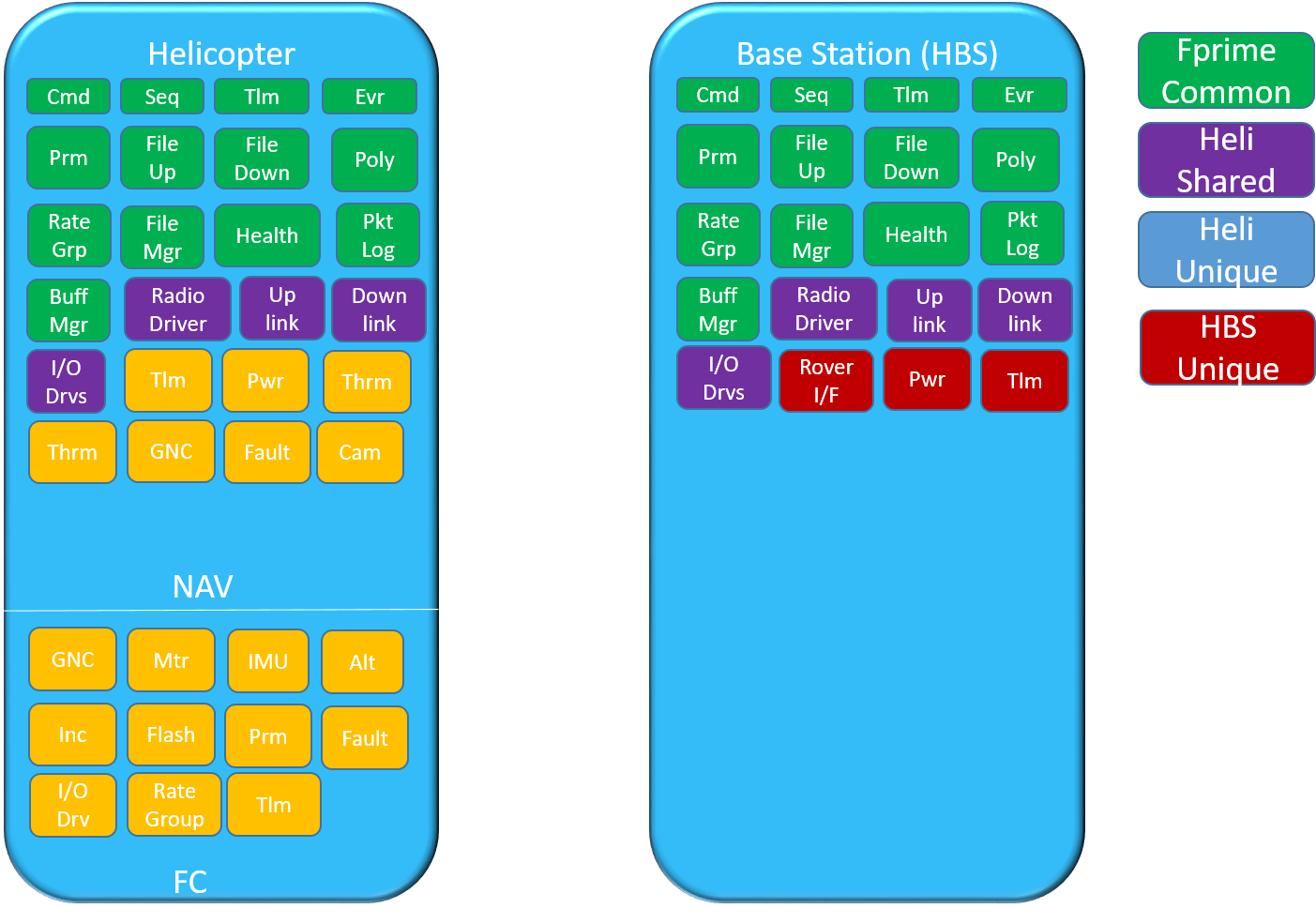Projects and Deployments
F´ is naturally organized into projects and deployments. Projects use F´ to solve some embedded system problem, and may consist of one or more deployments. Deployments are tied to individual builds of code and are typically used to drive a single device.
A topology is a specific set of interconnected components, which represents the design of a deployment. Further explanation of projects and deployments and how they differ is explained in this guide.
To illustrate this, the Mars Helicopter project is an excellent example. Mars Helicopter uses one project that defines two deployments: one for a base station, and one for the mobile helicopter. This is shown in Figure 1.
 Figure 1. Mars Helicopter flight software components.
Figure 1. Mars Helicopter flight software components.
Projects
A project may consist of one or more related deployments. Each deployment is one instance of F´ software. Projects are used to organize F´ code that is closely related. They define at least one deployment (see above), but may define multiple deployments. Component designs and source may be shared between these related deployments.
There are several reasons a project may contain multiple deployments.
- A project consists of multiple spacecraft/electronic platforms/CPUs/systems. F´ can be used on multiple nodes in such systems.
- A project has test deployments, mocked-deployments, or other deployments that allow for specific testing setups.
Figure 1 shows an example of a project, the Mars Helicopter flight software, which was implemented with F´. The Mars Helicopter is the project, but has two deployments: one designated for the helicopter, and one designated for the base station.
Deployments
Deployments are tied to builds; for each build of the code there is a single deployment. These deployments may share components and ports from within the project, but the topology and the individual build of F´ are typically unique.
Deployments may define custom components and ports that are only used in that specific deployment. They may also inherit other components, like those defined by the F´ framework. Each F´ deployment uses a set of components and ports, and has a single topology. Components and ports are organized into the deployments topology to represent the behavior of that deployment.
Deployments contain the needed build system artifacts to build the F´ framework, components, ports, and the topology into an executable that can be deployed onto embedded hardware, or even run on the user’s computer.
In our example, multiple non-homogeneous systems are defined for the Mars Helicopter. It has multiple deployments as each system would have a separate unique executable to control it.
Topologies
A topology is a specific set of interconnected components that represent a system. Topologies contain instantiations of each component, and list connections between the ports of the components.
Projects contain one or more deployments that are closely related, as discussed above, while deployments contain a topology that represents the design of the system including, ports, and components needed for the specific use of F´.
Conclusion
Projects are containers of related deployments to solve some problem. Deployments are a container for a topology and build configuration to create an executable for a specific device used on the project.
